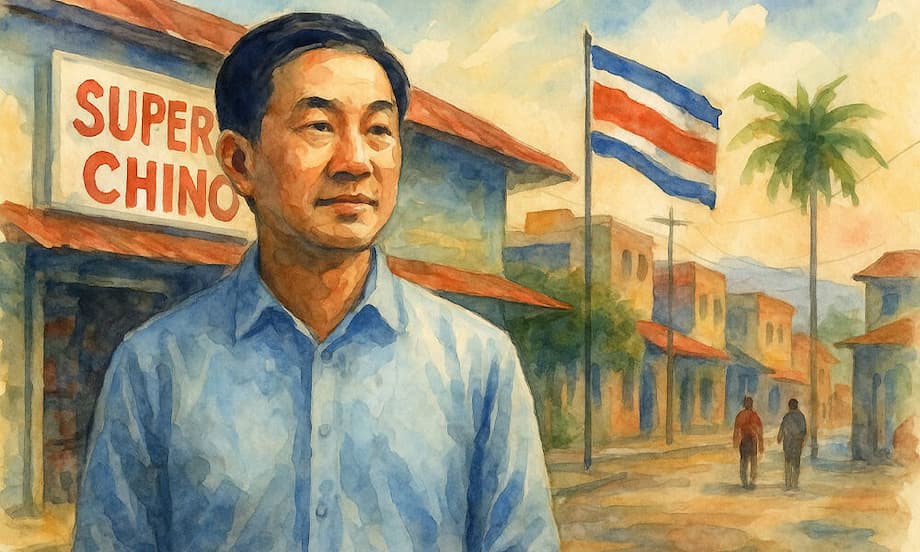Chinese Influence in Costa Rica: From Supermarkets to Stadiums and Schools
In recent decades, China’s global reach has expanded dramatically, reshaping economies, politics, and cultures from Africa to Latin America. Nowhere is this more evident in Central America than in Costa Rica, where Chinese influence is visible in everyday life, major infrastructure, and even the classroom. This article explores how China’s presence in Costa Rica has grown, the motivations behind it, and what it means for the country’s future.
- Chinese Influence in Costa Rica: From Supermarkets to Stadiums and Schools
- How Did China’s Presence in Costa Rica Begin?
- Chinese Investment: Building Costa Rica’s Future?
- Education: Mandarin in the Classroom
- Regional and Global Context: China’s Latin American Ambitions
- Challenges and Criticisms: Balancing Opportunity and Risk
- Demographic and Social Dynamics: The Human Side of Influence
- What Does the Future Hold?
- In Summary
How Did China’s Presence in Costa Rica Begin?
The story of Chinese influence in Costa Rica is both local and global. For many Costa Ricans, the first sign of this presence was the proliferation of small, family-run supermarkets—often referred to as “pulperías”—operated by Chinese immigrants. Over the past three decades, these businesses have become fixtures in towns across the country, especially in the southern region known as Zona Sur. The owners, mostly Han Chinese from mainland China and Taiwan, are known for their relentless work ethic, often putting in 80-hour weeks to build a better future for their families.
But the relationship between Costa Rica and China goes far beyond local commerce. Until 2007, Costa Rica was one of the few countries in the world to maintain diplomatic relations with Taiwan. That year, in a move that reflected broader geopolitical trends, Costa Rica switched recognition to Beijing. The decision was not just symbolic—it opened the door to a wave of Chinese investment and cooperation.
Diplomatic Shift: From Taiwan to Beijing
China’s strategy in Latin America has often involved persuading countries to abandon diplomatic ties with Taiwan in exchange for economic incentives. According to testimony before the U.S. Senate Foreign Relations Committee, the People’s Republic of China (PRC) uses a mix of investments, infrastructure projects, and outreach to local elites to build influence and encourage countries to recognize Beijing over Taipei. In Costa Rica’s case, the switch was quickly rewarded with high-profile projects, including the construction of the National Stadium in San José, financed and built by China.
As one analyst put it, “Diplomatic switches from Taiwan to the PRC often result in increased Chinese market penetration but limited benefits for local exports.”
This pattern has repeated across the region, with China using its economic clout to reshape diplomatic alliances and expand its soft power.
Chinese Investment: Building Costa Rica’s Future?
China’s economic engagement in Costa Rica is part of a broader push across Latin America. Since the early 2000s, China has become a top trading partner and major investor in the region, funding energy, infrastructure, and technology projects. The Belt and Road Initiative (BRI), China’s global infrastructure program, has attracted over twenty Latin American and Caribbean countries, including Costa Rica.
In Costa Rica, Chinese investment has taken several forms:
- Infrastructure: The National Stadium in San José, a gleaming symbol of the new partnership, was built by 600 imported Chinese workers. While some in the Costa Rican business sector were dismayed by the lack of local involvement, others pointed to the stadium’s efficient and on-budget completion as a positive example.
- Supermarkets and Small Businesses: Chinese-owned supermarkets now dominate the non-chain grocery sector in many regions, providing affordable goods and creating jobs.
- Technology and Clean Energy: Costa Rica has benefited from Chinese exports of electric vehicles (EVs) and solar panels, helping the country become a regional leader in electric mobility and renewable energy.
However, not all projects have gone smoothly. Local infrastructure initiatives, such as the $40 million runway repair in Liberia, have faced criticism for poor execution, highlighting the challenges of balancing foreign investment with local capacity and oversight.
Trade and Economic Ties
China and Costa Rica have also deepened their trade relationship. In 2011, they signed a free trade agreement, making Costa Rica the first Central American country to do so. This has boosted exports of Costa Rican products like coffee, bananas, and medical devices to China, while Chinese goods—ranging from electronics to vehicles—have flooded Costa Rican markets.
Yet, as with other Latin American countries, there are concerns about dependency on Chinese loans and investments, as well as the long-term impact on local industries and sovereignty. Chinese investments often come with fewer conditions than those from Western countries, but critics warn of potential debt traps and environmental risks.
Education: Mandarin in the Classroom
China’s influence in Costa Rica is not limited to business and infrastructure. It is increasingly visible in the classroom. The CR Universal School, for example, offers a Mandarin language program with 15 classes per week, making it the second most popular language after English. Confucius Institutes—Chinese government-backed cultural centers—have also been established to promote language learning and cultural exchange.
This educational outreach is part of China’s broader soft power strategy, which aims to build people-to-people ties and foster goodwill. For Costa Rican students, learning Mandarin opens doors to new economic opportunities and global networks. For China, it helps cultivate a new generation of partners and allies in the region.
Business School Collaboration and International Networks
Costa Rica’s leading business schools, such as INCAE Business School, are part of global networks that include top Chinese institutions like Renmin University. These partnerships facilitate student exchanges, joint research, and cross-cultural learning, preparing future leaders to navigate an increasingly interconnected world.
According to the Positive Impact Rating 2025, INCAE Business School in Costa Rica is among the top-rated schools globally for social impact, reflecting a commitment to sustainability, ethics, and inclusion—values that resonate with both local and international partners.
Such collaborations are not just academic—they help shape the next generation of business and political leaders who will manage the evolving relationship between Costa Rica and China.
Regional and Global Context: China’s Latin American Ambitions
Costa Rica’s experience is part of a much larger story. Across Latin America, China has become a major player, investing in ports, railways, energy, and technology. In Panama, for example, China’s involvement in infrastructure projects around the canal has drawn scrutiny from the United States, which views the region as strategically vital.
China’s approach combines economic incentives, diplomatic engagement, and cultural outreach. The goal is not just to access markets and resources, but to build long-term influence and position itself as an alternative to traditional Western partners.
U.S. Response and Geopolitical Tensions
The United States has responded with concern to China’s growing presence in Central America. High-level visits, such as Secretary of State Marco Rubio’s recent trip to Panama and Costa Rica, have focused on urging local governments to limit Chinese influence, especially in critical infrastructure like the Panama Canal. U.S. officials warn that Chinese control over key assets could pose security risks and undermine regional stability.
As Leland Lazarus, an expert on China’s role in Latin America, told NPR, “China is a major trading partner across Latin America. U.S. efforts to counter Chinese influence will face significant challenges.”
Despite these warnings, many Latin American countries—including Costa Rica—see Chinese investment as an opportunity for development and diversification, especially as U.S. engagement has sometimes been inconsistent.
Challenges and Criticisms: Balancing Opportunity and Risk
While Chinese investment has brought tangible benefits to Costa Rica, it has also raised important questions:
- Economic Dependency: Relying too heavily on Chinese loans and markets could leave Costa Rica vulnerable to external shocks or political pressure.
- Local Industry Impact: The influx of cheap Chinese goods and the dominance of Chinese-owned businesses can challenge local entrepreneurs and manufacturers.
- Transparency and Governance: Some Chinese-funded projects have faced criticism for lack of transparency, limited local involvement, or environmental concerns.
- Diplomatic Balancing Act: Costa Rica must navigate its relationship with both China and traditional allies like the United States, balancing economic interests with political and security considerations.
These challenges are not unique to Costa Rica. Across Latin America, countries are grappling with how to maximize the benefits of Chinese engagement while protecting their own interests and maintaining sovereignty.
Demographic and Social Dynamics: The Human Side of Influence
China’s global strategy is shaped by its own internal dynamics. As the country faces a declining population and an aging workforce, it is seeking new markets and opportunities abroad. For Chinese immigrants in Costa Rica, the move is often motivated by a desire for economic opportunity and a better life for their children. Their integration into Costa Rican society is not always smooth—cultural differences and stereotypes persist—but over time, many have become valued members of their communities.
At the same time, Costa Rican perceptions of China and Chinese people are evolving. While “Chino” is still used as a catch-all term for anyone of Asian descent, there is growing recognition of the diversity within the Chinese community and the broader significance of China’s role in the world.
What Does the Future Hold?
As China’s influence in Costa Rica continues to grow, the country faces important choices. Will it become a model for successful engagement with China, balancing economic development with local needs and values? Or will it fall into the traps of dependency and lost sovereignty that critics warn about?
The answer will depend on the actions of policymakers, business leaders, educators, and ordinary citizens. It will also be shaped by broader geopolitical trends, including the evolving rivalry between China and the United States, the future of global trade, and the challenges of climate change and technological transformation.
What is clear is that China is “liú zài zhèlǐ” (留在这里)—here to stay. The question for Costa Rica, and for the region as a whole, is how to make the most of this new reality.
In Summary
- China’s influence in Costa Rica has grown rapidly, from small businesses to major infrastructure and education.
- The diplomatic switch from Taiwan to Beijing in 2007 opened the door to significant Chinese investment and cooperation.
- Chinese-owned supermarkets and businesses are now common across the country, reflecting both economic opportunity and cultural integration.
- Major projects like the National Stadium and increased trade have strengthened economic ties, but also raised concerns about dependency and transparency.
- Mandarin language programs and academic partnerships are expanding China’s soft power and shaping the next generation of Costa Rican leaders.
- U.S. officials have expressed concern about China’s growing presence in Central America, highlighting geopolitical tensions in the region.
- Costa Rica faces the challenge of balancing the benefits of Chinese engagement with the need to protect local interests and maintain sovereignty.
- The future of the relationship will depend on wise policymaking, regional cooperation, and the ability to adapt to a rapidly changing global landscape.












